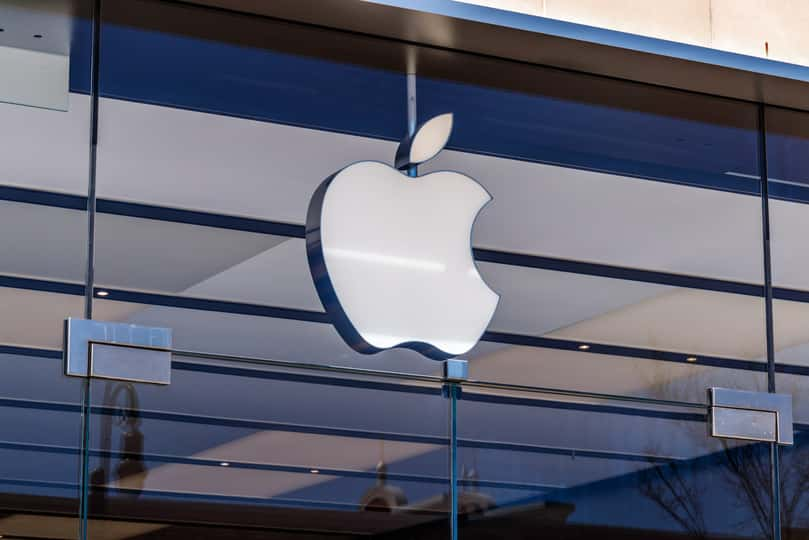Renowned tech giant Apple, Inc. (AAPL - Get Rating) made history by becoming the first company to hit a $3 trillion market cap on January 3, 2021. It was also the second-best performing FAANG stock last year, with 33.5% gains over the past year.
The stock gained 33.8% in price in 2021, outperforming the benchmark S&P 500 and Nasdaq 100 index’s 27.7% and 22.9% returns, respectively.
As one of the most valuable tech companies worldwide, AAPL has long been a favorite investor stock and a part of the FAANG group.
Here is what could shape AAPL’s performance in the near term:
Entry into the EV industry
AAPL is reportedly working toward launching electric vehicles in 2025. The company plans to launch fully autonomous cars in the market within the next four years, which would ideally have no steering wheels. According to a Bloomberg report, the company has labeled this project the ‘Titan’ and has already completed designing the processor chips to be integrated in the cars.
With immense capital funding and technical prowess, AAPL’s latest venture is expected to be a hit. However, with several EV giants themselves making significant strides in developing autonomous driving technology, AAPL’s project Titan is expected to face stiff competition following its launch.
Clean Energy Initiative
AAPL plans to achieve carbon neutrality across its supply chain by 2030. As of Oct. 27, 2021, approximately 175 AAPL suppliers were transitioning toward renewable energy, reflecting a 100% year-over-year increase. The company’s clean energy initiatives are expected to reduce CO2 emissions by 18 million metric tons, with every AAPL device sold having a net-zero climate impact by 2030.
Mixed Growth Prospects
Analysts expect AAPL’s revenues to increase 5.4% in its fiscal year 2022 first quarter (ended December 2021) but decline marginally in the current quarter (ending March 2022). Furthermore, the company’s revenues are expected to improve by 3.8% in its fiscal 2022.
The consensus EPS estimates indicate an 11.9% rise in the about-to-be-reported quarter, but a 6.4% decline in the current quarter. In addition, the Street expects AAPL’s EPS to improve 1.6% in the current year and at a 15.7% CAGR over the next five years.
Stretched Valuation
In terms of forward non-GAAP P/E, AAPL is currently trading at 30.69x, which is 25.7% higher than the 24.41x industry average. Its forward non-GAAP PEG multiple of 2.62 is 54.1% lower than the 1.70 industry average.
AAPL’s forward Price/Sales and Price/Cash Flow multiples of 7.56 and 26.39, respectively, are significantly higher than 4.07 and 22.92 respective industry averages. . In addition, the stock’s 23.92 forward EV/EBITDA multiple is 42.5% higher than the 16.79 industry average. Furthermore, it is currently trading at 45.54 times its forward book value, which is 574.6% higher than the 5.81x industry average.
POWR Ratings Reflect Uncertainty
AAPL has an overall C rating, which equates to Neutral in our proprietary POWR Ratings system. The POWR Ratings are calculated by considering 118 distinct factors, with each factor weighted to an optimal degree.
AAPL has a C grade for Stability and Growth. Its relatively high 1.20 beta is in sync with the Stability grade. In addition, the company’s revenues have increased at an 11.3% CAGR over the past three years. However, its total assets declined at a rate of 16.2% per annum over this period, justifying the Growth grade.
Of 53 stocks in the B-rated Technology – Hardware industry, AAPL is ranked #23.
In addition to the grades I have highlighted, one can view AAPL ratings for Momentum, Sentiment, Value, and Quality here.
Bottom Line
AAPL’s impressive products and ecosystem have created a loyal customer base over the years. The company has expanded its production capabilities to manufacture its personalized processor chips to develop industry-leading computers with enhanced efficiency and performance. Furthermore, last November the company launched Apple Business Essentials, which provides device management, support services and storage to small businesses. However, analysts and investors are closely watching APPL’s entry into the electric vehicle market. So, with market volatility surging, we think investors should wait until AAPL’s valuations stabilize before investing in the stock.
How Does Apple, Inc. (AAPL) Stack Up Against its Peers?
While AAPL has a C rating in our proprietary rating system, one might want to consider looking at its industry peers, Digi International Inc. (DGII - Get Rating), Seiko Epson Corporation (SEKEY - Get Rating), and Synopsys, Inc. (SNPS - Get Rating), which have an A (Strong Buy) rating.
Want More Great Investing Ideas?
AAPL shares were trading at $174.80 per share on Thursday morning, down $0.12 (-0.07%). Year-to-date, AAPL has declined -1.56%, versus a -1.29% rise in the benchmark S&P 500 index during the same period.
About the Author: Aditi Ganguly

Aditi is an experienced content developer and financial writer who is passionate about helping investors understand the do’s and don'ts of investing. She has a keen interest in the stock market and has a fundamental approach when analyzing equities. More...
More Resources for the Stocks in this Article
| Ticker | POWR Rating | Industry Rank | Rank in Industry |
| AAPL | Get Rating | Get Rating | Get Rating |
| DGII | Get Rating | Get Rating | Get Rating |
| SEKEY | Get Rating | Get Rating | Get Rating |
| SNPS | Get Rating | Get Rating | Get Rating |






